
South-western Kruger has the most rainfall and the highest altitudes in Kruger. The foothills and granite domes on the western border of the Park enjoy an average of about 760mm of rain a year, considerably higher than the Park average of 500mm.
Birding Map of South-West Kruger
- Afsaal
- Afsaal to Skukuza
- Malelane Gate
- Malelane to Skukuza
- Skukuza via Biyamiti
- Around Berg-en-Dal
- Malelane to Crocodile River
- Numbi Gate to Skukuza
- Around Pretoriuskop
- Numbi Gate to Malelane
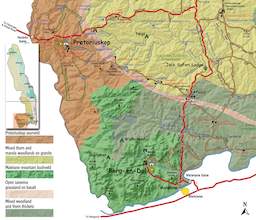
Habitat Pointers
Foothills descend into low, rolling hills with mixed woodlands, generally on granite/gneiss; sweet grazing along the gabbro intrusion into the sourveld; two distinct mountain habitats (Pretoriuskop sourveld and Malelane mountain bushveld) both characterised by prominent granite koppies but with slightly different vegetation types.
The south-western granites are among the oldest rocks in the world, dated to 2.4 billion years ago - half the age of the earth itself. The foothills can be divided into three main habitats:
- the southern Malelane Mountain Bushveld - mixed bushwillow and acacia woodlands on shallow, rocky soils that produce sweet grasses on all but the highest slopes
- the western Pretoriuskop sourveld with terminalia, mixed acacia and Marula woodlands; pockets of long, sour grass becoming sweeter on the lower contours
- mixed bushwillow, Knob-thorn and Marula woodlands on low rolling hills along the lowveld floor
Grassland birds that especially favour these habitats include the Croaking Cisticola and the Neddicky. Many of Kruger's rare and endangered species are found here. There is a long history of local human habitation and most rock-art in the Park is found in the south-western hills.
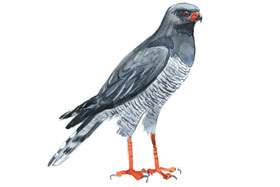 Dark Chanting Goshawk (Melierax metabates)
Dark Chanting Goshawk (Melierax metabates)
This bold little hawk has bright red eyes and a rufous, banded chest; most often seen in broadleaf woodlands around watercourses. Its numbers appear to increase in winter when there is an influx of sub-adult birds into the Park.
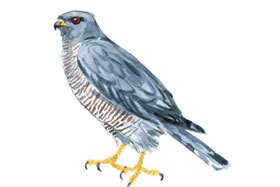 Shikra* (Accipiter badius)
Shikra* (Accipiter badius)
This bold little hawk has bright red eyes and a rufous, banded chest; most often seen in broadleaf woodlands around watercourses. Its numbers appear to increase in winter when there is an influx of sub-adult birds into the Park.
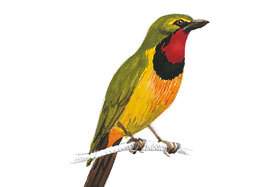 Gorgeous Bush-Shrike (Phoeniculus cyanomelas)
Gorgeous Bush-Shrike (Phoeniculus cyanomelas)
Unmistakable red, black and orange-yellow underparts; more easily heard than seen as it skulks around in dense thickets, hawking insects. Pretoriuskop Camp and the bush around Shabeni are the best places to find it.
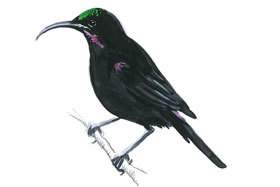 Amethyst Sunbird* (Nectarinia amethystina)
Amethyst Sunbird* (Nectarinia amethystina)
Formerly known as the Black Sunbird, it has subtle purple spots on its throat and forehead; look out for it around aloes and flowering trees; it is only found in the south-western foothills and the best place to look for it as at Pretoriuskop Camp.
Where to Stay in South-west Kruger Park


